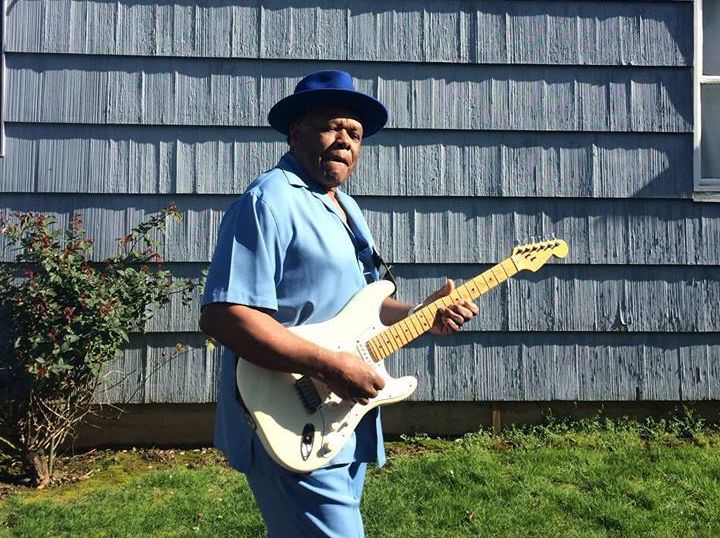Take Some Blues, Gospel, and Electronic Music on a Walk through Kenton

Blues institution Norman Sylvester is one of many Kenton musicians featured in a new audio walk.
Image: Emily Fitzgerald
"I feel like this whole neighborhood has its own music. Like if you walk down the street, you can hear something tapping, or you can hear someone whistling. I just feel like this is kind of a more musically oriented community. Everyone here seems to love music."
These are the words of a De La Salle North High School student talking about North Portland’s Kenton neighborhood. She’s just one of many voices featured in a new audio walk, a casually rambling musical tour that introduces listeners to Kenton music-makers of all types: Portland blues icon Norman Sylvester, electronic music pioneer Heather Perkins, rock ‘n’ roller Joshua James, gospel singers at Celebration Tabernacle.
The hourlong walk is the work of Renee Sills, a student in the Art and Social Practice MFA program at Portland State (students from the program also put together Disjecta’s current exhibit, The Music That Makes Us, featuring ephemera from Kenton musicians). The recording has been available online for a few weeks—you can download the audio files and amble through Kenton on your own—but this Saturday, April 16, Sills will guide a group tour.
“I’m really interested in the space people are in while listening to headphones,” says Sills, who’s also created walks through Peninsula Park and the Reed College campus. “It’s a private experience, but to be able to share that with a group of people—it’s fun.”
Kenton, Sills says, offered rich material for both the exhibit and the audio walk. Founded by Swift Meat Packing as a company town, the neighborhood—like just about every other historically working-class part of Portland—has seen gentrification and rising prices in recent years. It’s about 1,000 feet, for example, from the Dancin’ Bare, Portland’s self-proclaimed “Premier Blue Collar Strip Club,” to the exposed air ducts and faux taxidermy of new gastropub Swift and Union.
“There are a lot of people who aren’t familiar with Kenton,” Sills says. “As a newcomer, it’s easy to objectify a space. People could come into Kenton and just see it for the wrapping, but I hope people will be able to appreciate the history and feel invested in the continuing of Kenton’s spirit.”
As you listen to snippets of songs and interviews—Sylvester discusses song as a tool of both protest and peacemaking, while a high-school student describes his plans to study music composition and ethnomusicology in college—you can follow the provided map, or wander more freely. This was Sills’ intent. “It felt nice to have spaciousness around people’s experiences,” she says. “It doesn’t matter where you’re walking, because you’re walking with the person and listening to their music.”
Meet at Disjecta at 12 p.m. Saturday, April 16 for a guided audio tour, or take the walk on your own.
